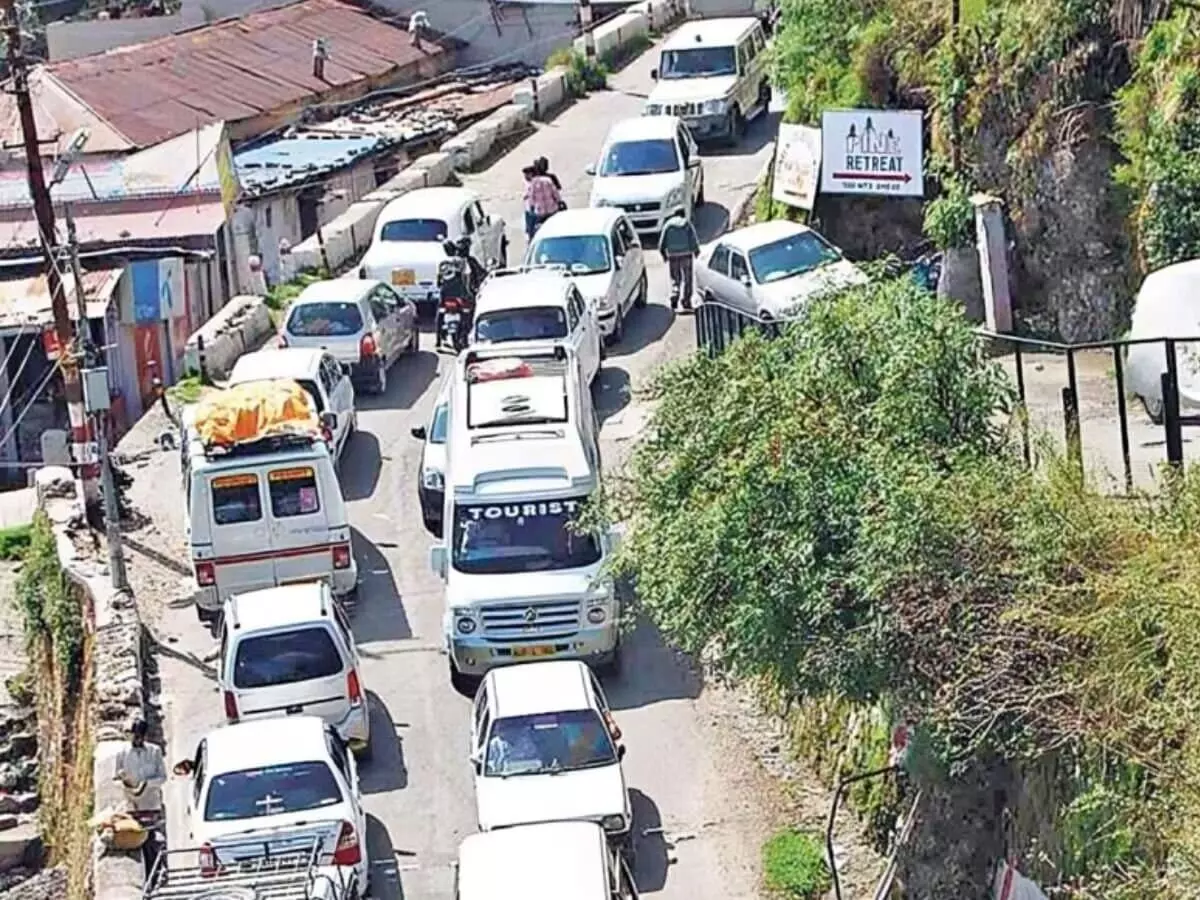Massive Weekend Traffic Jams Bring Mussoorie to a Standstill, Prompting Long-Term Solutions

This past weekend, Mussoorie was hit with heavy traffic jams that turned a quick one-hour drive from Dehradun into a tiring three-hour crawl for both tourists and locals. With an estimated 6,000 to 7,000 vehicles pouring in every weekend, handling the traffic has become a real headache—especially since the town doesn’t have enough parking spots to accommodate everyone.
Santosh Kunwar, the officer in charge of Mussoorie police station, explained, “Handling such a large number of vehicles with limited parking forces us to think outside the box. That’s why we’ve introduced a one-way traffic plan to help ease the flow.”
Meera Saklani, chairperson of the Mussoorie Municipal Board, acknowledged the infrastructure challenges and highlighted two major projects underway to provide long-term relief: the Dehradun-Mussoorie Ropeway and the Mussoorie Tunnel.
According to locals, the traffic jams mostly happen because the roads are narrow and certain spots get heavily congested—places like Gandhi Chowk, Motilal Nehru Road, Picture Palace, and the stretch from Kingcraig to Zero Point. Library Chowk, which is a major crossroads leading to popular places like Mall Road, Kempty Falls, Company Garden, and the Lal Bahadur Shastri National Academy of Administration (LBSNAA), usually faces the worst of the traffic chaos.
To control the weekend crowd, heavy vehicles like tempo travellers and large buses are not allowed to enter Mussoorie and are turned away at Kothal Gate. Traffic heading to Kempty Falls is diverted from Gajji Bend to Zero Point to avoid the jam at Library Chowk.
To help with the parking crunch, the district administration has opened up satellite parking areas at Hathipaon and Kingcraig, which are about two to three kilometers away from the town center. The Hathipaon road near George Everest House alone can hold over 900 vehicles. Police officers there help direct tourists to shuttle services that take them to busy spots like Library Chowk and Picture Palace, encouraging people to leave their cars behind and avoid driving into the crowded Mall Road area.
Sanjay Agarwal, president of the Mussoorie Hotel Association, suggested the need for a multi-level, secure parking facility. “Most tourists avoid parking along Gajji Bend due to lack of safety. A proper parking structure would allow them to leave their expensive vehicles without worry.”
The persistent traffic jams have even started to affect tourism. Harpreet Singh, a visitor from Jalandhar, Punjab, shared his frustration: “We came to Mussoorie to relax over the weekend, but ended up stuck in traffic, wasting time searching for parking, which was mostly full.”
Looking ahead, the Dehradun-Mussoorie Ropeway under construction is expected to reduce both traffic and pollution. “Tourists will be able to park their vehicles in Dehradun and take the ropeway to Mussoorie, which will significantly ease road congestion,” Saklani said.
The ₹700 crore Mussoorie Tunnel Project is another ambitious plan designed to cut through the traffic snarls. The 2.74-kilometer, two-lane tunnel will bypass the busiest areas of Mussoorie, including Mall Road and LBSNAA. “We have finalized the project’s detailed report and are coordinating with Union Minister Nitin Gadkari to lay the foundation stone soon. This tunnel will bypass the worst bottlenecks, diverting vehicles heading to Kempty Falls and Yamunotri,” Saklani added.
With these projects underway, Mussoorie hopes to reclaim its charm and make visits smoother and more enjoyable for everyone.
